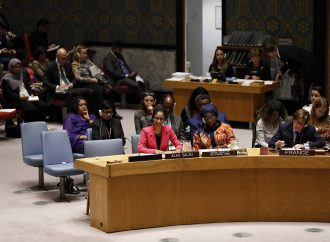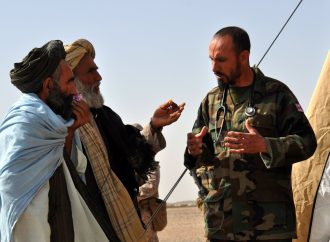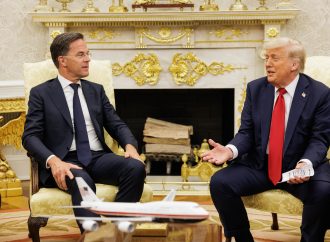The withdrawal of the United States from Afghanistan in May 2021 effectively terminated NATO’s mission in the country, leaving it to face challenges such as governmental corruption, stagnant economic growth, underdevelopment, and human insecurity. Despite the billions of dollars invested in peacebuilding initiatives, there is minimal interest in systematically assessing peacebuilders’ involvement and extracting lessons from donor errors.
A generous grant from the Social Sciences and Humanities Research Council of Canada (grant # 430-2021-00524) allowed me to study the practical and intellectual failures of international peacebuilding policy and practice in Afghanistan at both strategic and operational levels, as well as Canada’s role therein. My findings were published in a book. The lessons (to be) learned were just published in a longer, open access journal article. I provide a summary below.
1. Understand the Neighborhood before You Intervene
Western governments underestimated the geopolitical neighborhood of Afghanistan. It shares a border with Pakistan, Iran, China, Turkmenistan, Tajikistan, and Uzbekistan, which all have varying interests in Afghanistan. Western peacebuilders often failed to understand the diverse relationships between these countries and their interests, including the Durand Line that was imposed by the British in 1893 and created an artificial identity clash between Pashtuns’ nationality and ethnic belonging.
2. Liberal Peacebuilding Does Not Work
Liberal peacebuilding emerged as an approach in response to internal conflicts in the post-Cold War era. It assumes that democracy and a free-market economy allow a peaceful settlement of conflicts, making it the strongest foundation for development and governance. In Afghanistan, the liberal peacebuilding governance model was imposed externally, but failed to match the interests and priorities of local Afghans and their traditional tribal institutions of governance. Instead, peacebuilders focused on strengthening the capacities of the Afghan central government in Kabul, which undermined the indigenous and stable local Afghan social contract. This centralization of government authority also meant that the Afghan government was well represented in major cities but lacked the power to reach rural communities, alienating the federal government’s legitimacy among the (rural) population.
Finally, peacebuilding is most successful when a formal peace agreement is signed by parties to the conflict, as it regulates sources of state power and shapes the country’s social and political rules. But there was no peace agreement in place when the Western peacebuilding operation commenced in 2003, and neither were the Taliban invited to be part of the negotiations towards one.
3. Support Local Peacebuilding
International peacebuilding enterprises overlooked distinctions between external state building and nation building. State building enhances capacity and institutions, while nation building constructs a national collective identity, drawing on local traditions, culture, institutions, and customs. It cannot be imposed externally.
Moreover, top-down liberal approaches to fixing the fragile state of Afghanistan were unrealistic and not conducive to pragmatic, local-based governance solutions. Indeed, international peacebuilders’ complex plans and liberal reform agendas aggravated the civil war and undermined Afghanistan’s social contract. To effectively respond to local needs, scholars recently found that local knowledge is required to increase the effectiveness of peacebuilding interventions, as well as embracing local actors as co-creators of knowledge and indigenous institutions. In the future, international peacebuilders should act more like moderators, helping implement local peacebuilding agendas and fostering local governance institutions. Security and development must be considered jointly, not separately or in sequence.
4. Representative Institutions Are a Must
Representation is not only about who obtains power and how political elites are perceived and held accountable; it is also about how individuals and ethnicities are represented in government institutions, specifically at the local levels, to increase legitimacy. From the point of view of reconciliation and transitional justice and building trust in state institutions, appointing former warlords to higher political offices (as cabinet ministers and deputy ministers, for instance) was highly problematic because it undermined the legitimacy and effectiveness of the Afghan government, provided warlords with political legitimacy and rewards for past (mis)behaviors. It also vindicated them politically to the detriment of state institutions and the Afghan social contract. Again, the lesson for international peacebuilders to learn here is that state institutions must be designed jointly with the local population (and not just the local political elites) to effectively manage local conflict dynamics, including the local social, economic, and political pressures that favor the emergence of conflict. Effective local institution building would respect the priorities of the local population and thus overcome structural weaknesses (i.e. endemic corruption) in the delivery of public goods. Second, for institutions to be representative, pervasive grievances and demands, especially those of ethnic or religious groups, must be addressed. Once again, this necessitates deep knowledge of the historical, geographical, and cultural relationships between Afghanistan’s ethnicities, as well as the us vs. them element, and majority vs. minority dynamics in its society.
5. Be Coherent & Have a (Exit) Strategy
The Afghanistan peacebuilding intervention required efficient coordination and coherence across various policy spheres, including security and development. But peacebuilders there struggled to practice this coherence due to conflicting interests and strategies. Moreover, policy and mandate coherence must exist between international, regional, and local actors, and all actors must adapt and collaborate on strategic planning, including an exit strategy.
6. Use Aid Wisely and Align It
As my colleague Christoph Zürcher finds, peacebuilders’ foreign aid had negative effects on Afghanistan’s state development for several reasons. First, Western peacebuilders made their aid conditional, reasoning that their governments are accountable to their own taxpayers and not to Afghans. Thus, peacebuilders’ interests in helping the Afghan government or its people to prosper were not necessarily altruistic or selfless; they were driven by donors’ domestic political priorities and desire to make political gains at home. But in doing so, they violated one of the foremost international aid norms (i.e. the Paris Declaration), namely promoting local ownership of the peacebuilding process.
The principle of donor alignment in Afghanistan relies on donors’ commitment to supporting partner countries’ development strategies, and aligning their aid with the development strategies of the Government of Afghanistan’s (GoA) to build local capacities and legitimacy. However, in Afghanistan, aid effectiveness was simply a tool of peacebuilders, wielded when convenient, and made by and for peacebuilders. Specifically, approximately 75% of aid was managed by international institutions, not Afghans. This practice undermined the internal capacity of the GoA, as well as the trust needed to build a local, Afghan social contract, thus inhibiting the ability of Afghans to develop local ownership, capacity, and accountability. Moreover, Afghanistan’s heavy reliance, indeed dependence, on foreign aid made it a rentier state.
Conclusion
I have carved out six lessons (to be) learned from the peacebuilding intervention in Afghanistan, fully recognizing that there are likely several more. Against this backdrop, this blog is a small contribution to future discussions on lessons (to be) learned from the Afghanistan peacebuilding mission. We also need more comparative analysis of lessons from other peacebuilding interventions in different geographical areas and across various peacebuilding organizations (governmental and non-governmental) to increase the effectiveness of future peacebuilding operations.










